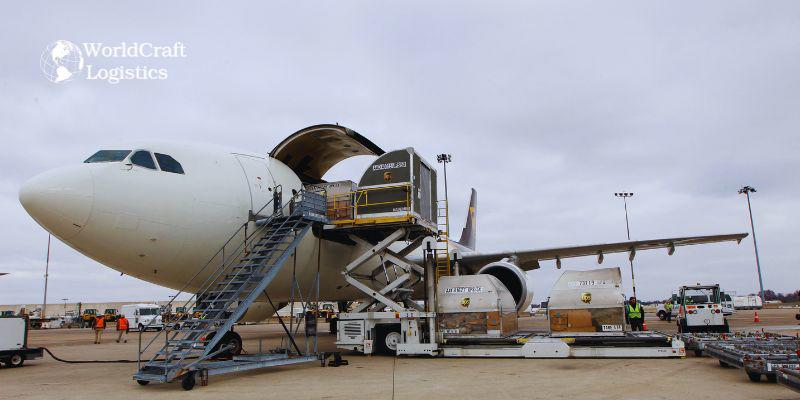
Starting June 1st, 2023 Our warehouse fee will be $0.65/cubic foot per month
In effort to lower the warehouse storage fee during inflation, we have went narrow aisle racking.This construction took us four months but the project is finally completed. With narrow aisle racking, we are able to drop storage by 24%.We as partners will go through this inflation together.
04/10/2024
Shippers are opting for shorter-term contracts to maintain flexibility in response to disruptions and an anticipated increase in summer capacity.
In March, the average air cargo spot rate rose by 7% month over month to $2.43 per kilogram, as reported by Xeneta. The uptick in volumes was fueled in part by e-commerce demand and modal shifts from ocean to air resulting from the Red Sea conflict.

According to an emailed report from Xeneta on April 4th, ongoing conflicts in the Red Sea and increased e-commerce volumes have propelled March air cargo demand up by 11% year over year, marking the third consecutive month of such growth.
Niall van de Wouw, Xeneta’s chief airfreight officer, stated that the surge in air freight was primarily fueled by a rise in volumes from the Middle East and South Asia as shippers transitioned from ocean to air transport to circumvent Red Sea delays and uphold operational resilience.
He further commented, "The question is, should we be surprised by it, or should we get used to it? Although the market didn’t benefit immediately, the Red Sea disruption was clearly a factor in these latest figures."

March data indicates that forwarders have continued to acquire a larger portion of spot market volumes to maintain flexibility and readiness for potential easing of disruptions in the Red Sea and the anticipated increase in summer belly capacity.
Consequently, more shippers have chosen to move away from longer-term global air cargo contracts in favor of short-term capacity commitments, as per Xeneta. In the first quarter, three-month contracts represented 41% of all newly negotiated contracts, marking an 18-percentage-point increase from the previous quarter.
Niall van de Wouw stated, "The air cargo market has clearly enjoyed a stronger-than-anticipated start to the year, but there’s a different quarter coming along and more capacity coming in, so we do expect an overall downward pressure on load factor and rates, aside from selected corridors where the continuing rise of e-commerce and the residue of the Red Sea uncertainty will continue to boost rate levels."
Despite historically weaker months in the first quarter, demand surpassed the growth in available capacity, according to Xeneta.
Van de Wouw commented further, "While this latest monthly data should be balanced against the lower base recorded in the corresponding month of 2023, when we saw weakened global manufacturing activities, Q1 2024 has still seen a surprisingly busy airfreight market."
Other articles for you:
👉 Air Freight Market: 2024 Outlook and Forecast
👉 Red Sea Region Witnesses a 21% Decline in Cargo Volumes Amidst Rising Ship Attacks
👉 Worries regarding rising container shipping costs following incidents in the Red Sea

Van de Wouw noted that the air cargo market has exceeded expectations for six consecutive months. "When is it going to slow down?" he questioned. "Only time will tell, but at present, airfreight demand remains remarkably resilient."
SEO
Digital Marketing/SEO Specialist
Simon Mang is an SEO and Digital Marketing expert at Wordcraft Logistics. With many years of experience in the field of digital marketing, he has shaped and built strategies to effectively promote Wordcraft Logistics' online presence. With a deep understanding of the logistics industry, I have shared more than 500 specialized articles on many different topics.

Hot News
08/05/2024

Hot News
02/23/2023

Hot News
02/23/2023

Hot News
02/06/2023
Hot News
02/07/2023